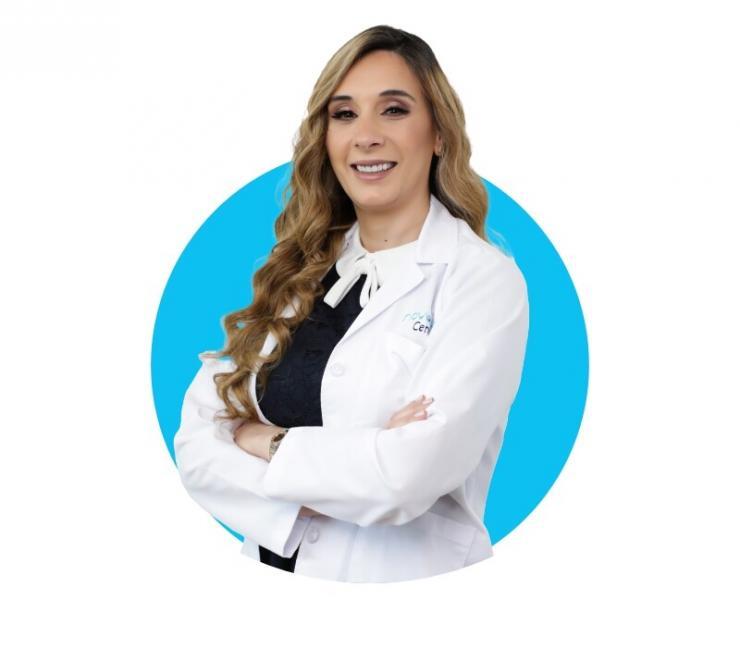Chronic Pelvic Pain Treatment in Dubai, Abu Dhabi and Al Ain
Chronic pelvic pain is a pain in the area below the navel and between the hips that lasts for a period of six months or more. There are many causes of chronic pelvic pain. Pain may be a symptom of another illness, or it may be a stand-alone condition. If chronic pelvic pain is found to be caused by another health problem, treatment for that problem may be sufficient to get rid of the pain.
However, in many cases, the underlying cause of chronic pelvic pain cannot be determined. In this case, the goal of treatment is to reduce pain and other symptoms and improve the quality of life.
- Severe and persistent pain
- Pain that occurs from time to time (intermittent periods)
- Severe cramps
- Pressure or heaviness deep into the pelvis
- Pain during sexual intercourse
- Pain during defecation or urination
- Pain when sitting for long periods
Discomfort may increase after standing for long periods of time and may go away when you lie down. The pain may be slight and annoying, or it may be so severe that it makes you unable to work, exercise or sleep.
- Endometriosis. It is a condition in which tissue from the endometrium grows outside the womb and responds to the menstrual cycle as is the case with the endometrium; increased thickness, fragmentation and bleeding every month due to the increased and decreased hormone levels. Due to the occurrence of this condition outside the womb, blood and tissue don’t the body through the vagina. Instead, blood and tissue remain inside the abdomen, which can lead to painful cysts and fibroids on scar tissue.
- Musculoskeletal problems. Conditions affecting the bone, joints, and connective tissues (musculoskeletal system) – such as fibromyalgia, pelvic floor muscle tension, osteitis pubis or hernia – and may lead to recurrent pelvic pain.
- Chronic pelvic inflammatory disease. This disease can occur if a long-term infection, often a sexually transmitted infection, causes scarring of the pelvic organs.
- Ovarian residue. After surgical removal of the uterus, ovaries and fallopian tubes, a small portion of the ovary may be inadvertently left inside which leads to painful cysts later.
- This non-cancerous growth in the uterine may cause pressure or heaviness in the lower abdomen.
- Irritable bowel syndrome. Irritable bowel syndrome symptoms – flatulence, constipation or diarrhea – may be a source of pain and pressure in the pelvis.
- Painful bladder syndrome (interstitial cystitis). This condition is associated with frequent bladder pain and the need to urinate frequently. You may feel pelvic pain when the bladder is full, and this pain will improve temporarily after emptying the bladder.
- Pelvic congestion syndrome. Some doctors believe that enlarged varicose veins around the uterus and ovaries may cause pelvic pain. However, other doctors highly rule out that pelvic congestion syndrome is a cause of pelvic pain because most women who suffer from enlarged veins in the pelvic area do not feel the associated pain.
- Psychological factors. Depression, chronic stress, or a history of sexual and physical abuse may increase the chances of developing chronic pelvic pain. Emotional stress increases pain intensity and living with chronic pain causes emotional stress. These two factors often represent a vicious circle.
In addition to discussing your symptoms and reviewing your medical history and family history, your doctor may suggest performing the following test:
- Pelvic examination. This can reveal signs of infection, abnormal growth, or pelvic floor muscle tension.
- Laboratory tests. During a pelvic exam, your doctor may order some tests to check for some infections, such as chlamydia or gonorrhea. Your doctor may also order a blood test to check your blood cell count and urine analysis to check for a urinary tract infection.
- Pelvic ultrasound. This test uses high-frequency sound waves to produce accurate images of your body organs. This procedure is especially useful for detecting lumps or abscesses in the ovaries, uterus, or fallopian tubes.
- Other imaging tests. Your doctor may recommend abdominal x-rays, computerized tomography (CT) or magnetic resonance imaging (MRI) to help detect abnormal tissues or lumps.
- During this surgical procedure, your doctor makes a small incision in your abdomen and inserts a thin tube that contains a small camera (laparoscope). The laparoscope allows the doctor to see pelvic organs and examine abnormal tissue or signs of infection. This procedure is especially useful for detecting endometriosis and chronic pelvic inflammatory disease.
Treatment
The main goal of treatment is to reduce symptoms and improve the quality of life.
If the doctor can determine a specific cause, the treatment will focus on that cause. However, if a cause cannot be identified, treatment will focus on controlling pain and other symptoms. For many women, the ideal method involves combining a range of treatments.
Medical Treatment
Over-the-counter pain therapies, such as aspirin or ibuprofen or acetaminophen may help to relieve the pelvic pain temporarily. However, pain medications rarely solve the chronic pain problem on their own.
Some women notice that the days when the pelvic pain is felt coincide with a specific stage of the menstrual cycle and hormonal changes that control ovulation and menstruation. When this is the case, birth control pills or other hormonal medications may help relieve pelvic pain.
If the source of the pain is a disease, your doctor may prescribe antibiotics
Some types of antidepressants may be helpful in treating chronic pain.
Tricyclic antidepressants, such as amitriptyline and nortriptyline and others, seem to have pain-relieving effects as well as their anti-depressant effects.
Surgical Treatment
If you have endometriosis, the doctor may remove endometriosis laparoscopically. During laparoscopic surgery, the surgeon inserts a thin laparoscope through a small incision near your belly button and inserts tools to remove the uterine tissue through one or more additional small incisions.
In rare complicated cases, the doctor may recommend a hysterectomy, salpingectomy, or ovarian resection. There are serious health consequences associated with undergoing this procedure. The doctor will discuss the advantages and risks in detail before recommending this option.
Other Treatments
Stretching, massage and other relaxation techniques can improve your chronic pelvic pain.
A physiotherapist can help you with these treatments, and help you develop pain coping strategies. Sometimes a physical therapist targets specific points of pain with a medicinal device called Transcutaneous Nerve Electrical Stimulation (TENS). Skin electrical stimulation of the nerve sends electrical pulses to nearby nerve pathways. The Physiotherapist may also use a psychological technique called biofeedback, which helps you to locate tight muscle areas so that you can learn to relax these areas.
This treatment involves implanting a device that blocks nerve pathways so that the pain signal does not reach the brain. This may be helpful, depending on the cause of your pelvic pain.
If your doctor finds that there are specific points in which you feel pain, you may benefit from injecting an anesthetic drug into those painful points). The drug, which is usually a long-acting local anesthetic, can prevent pain and relieve discomfort.






